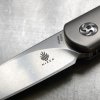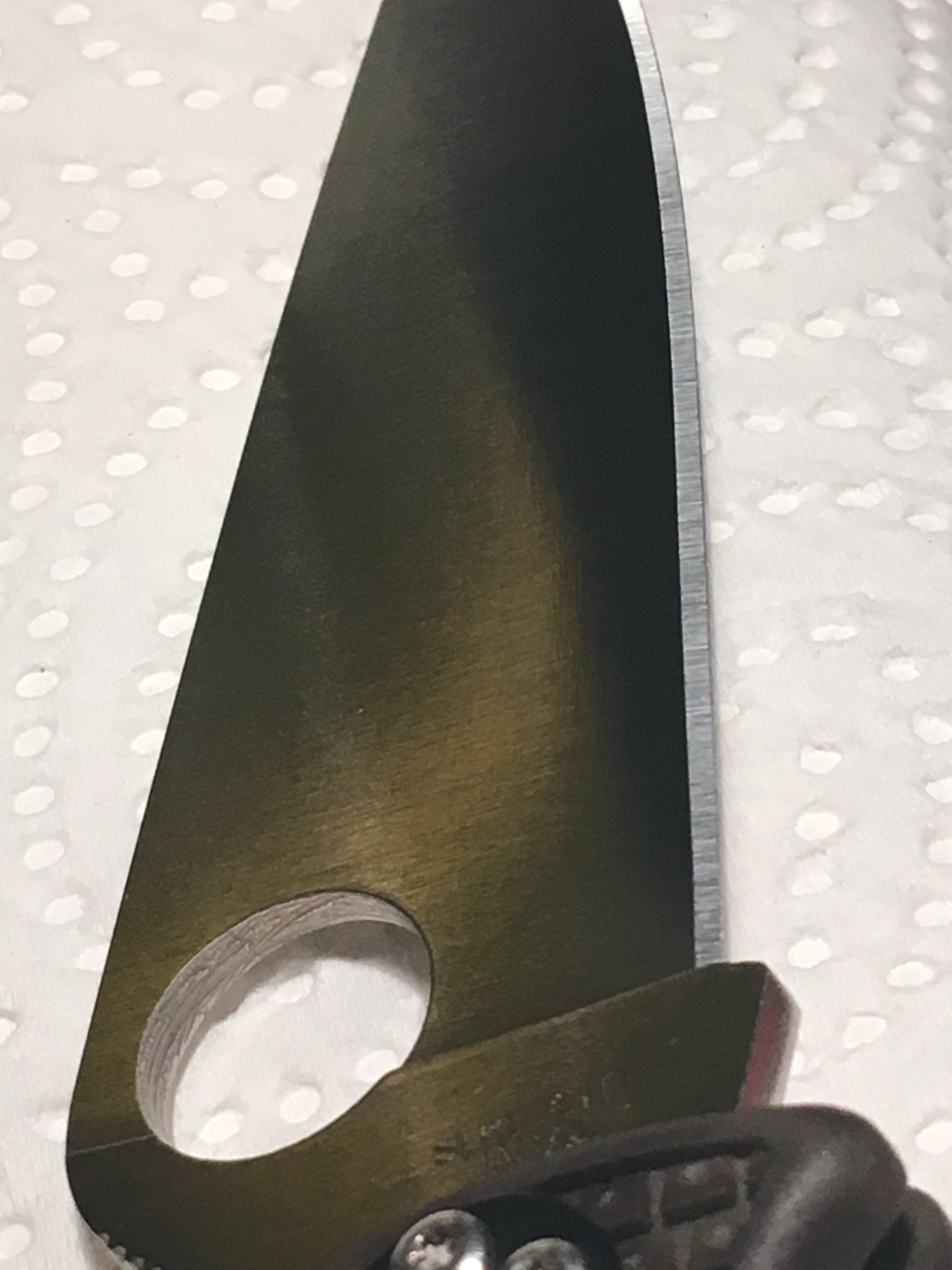- Joined
- Jun 4, 2010
- Messages
- 6,642
Good point. I've been avoiding serrations for a long time, but there are times when you still want that degree of slicing aggression, but without having to deal with serrations.
Here's a quick subjective example of how this is useful. I took some 1/4" sisal rope, would hold it in a loop, and try to cut through it in a single strong draw cut with edge facing up. Used the above knife, an Ontario Rat in D2, and a Spyderco Domino in CTS-XHP. The latter 2 have nice, but more polished edges at much higher grits. I have no way to measure in foot-pounds how much force it took, but the cheapo S&W with the sawtooth edgewas by far the easiest to make the cut. First couple tries, the Rat couldn't even do it, it slipped off the loop until I used more like a sawing motion. Bad! And dangerous. The Domino cut it without sawing, but with considerable torquing on it by me. But the S&W was just a clean straight draw cut and sliced right thru it on the first try.

In my experimenting with 3/8" manila it normally took half the pressure to complete a cut when drawing vs strict pressure cut at average finish levels - about 600-800 grit. I don't have the numbers in front of me. As the edge polish went up, the amount of force relative to the coarse edge, when used with a pressure cut, trended downward. The opposite true of draw cutting.
Any lengthwise movement is greatly assisted by lower grit values, pressure cutting is greatly assisted by higher. I always meant to do a detailed study of at least one or two steel types at similar geometry to see where they intersected - where the least penalty with either cut method lies. Anecdotally is probably in that 400-800 range, with considerable bias advantages going higher or lower.





